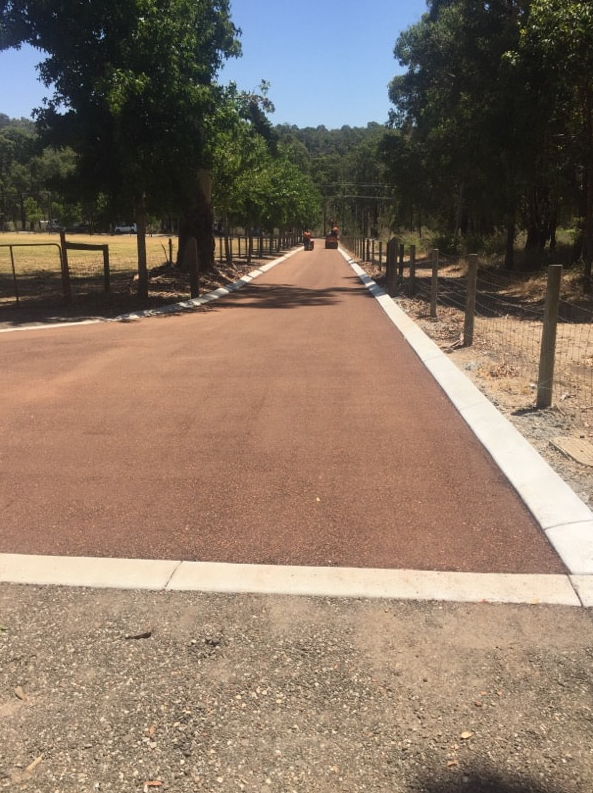Hardstands play a critical role in many industrial, agricultural, and commercial operations across Nerang, QLD. These high-use surfaces are designed to handle everything from light vehicle traffic to heavy machinery and storage. However, over time, even the most robust hardstands can show signs of wear—raising the question: should you regrade or resurface?
At Nerang Surfacing Solutions, we provide expert advice and practical solutions tailored to your site conditions. In this blog, we explore the difference between regrading and resurfacing, the warning signs that action is needed, and how to choose the most effective approach for your worn hardstand.
Understanding the Difference
Before deciding which option is right, it’s important to understand what each process involves.
What is Regrading?
Regrading refers to reshaping and re-levelling the surface of your hardstand using specialised machinery. This process is typically performed on unsealed or gravel-based surfaces to correct drainage issues, flatten ruts, and restore surface stability.
What is Resurfacing?
Resurfacing involves applying a new layer of asphalt or bitumen over the existing surface. It’s designed to seal cracks, repair worn areas, and restore the structural integrity of the hardstand, especially when the surface is already sealed or paved.
Signs Your Hardstand Needs Attention
Worn hardstands are more than just unsightly—they can lead to costly damage, safety hazards, and inefficiencies if not addressed in time. Watch out for these common signs:
- Uneven surfaces or depressions where water collects
- Rutting or low points from heavy equipment movement
- Widespread cracking or crumbling edges
- Loose aggregate or exposed base material
- Dust and erosion on gravel hardstands
- Potholes forming in sealed areas
If you’re experiencing these issues in Nerang, QLD, it’s time to assess whether regrading or resurfacing is the best way forward.
When to Regrade
Regrading is typically recommended when the hardstand is:
- Unsealed or made from gravel, compacted rubble, or road base
- Experiencing drainage problems or water pooling
- Showing early-stage wear such as ruts or minor surface depressions
- Used primarily for agricultural, rural, or low-speed vehicle traffic
Benefits of Regrading:
- Restores proper drainage and water flow
- Smooths out surface irregularities
- Reduces risk of erosion and washouts
- Prepares base for future sealing or surfacing
Regrading can extend the life of an unsealed hardstand when performed regularly as part of ongoing maintenance.
When to Resurface
Resurfacing is the better option when:
- The hardstand is already sealed with asphalt or bitumen
- Cracking, potholes, or surface fatigue are widespread
- Structural integrity is still intact but the surface is deteriorating
- The area supports moderate to heavy traffic loads
Benefits of Resurfacing:
- Seals off cracks and protects the underlying layers
- Strengthens the surface for ongoing use
- Improves safety and visual appeal
- Extends the life of your investment without full reconstruction
At Nerang Surfacing Solutions, we assess the existing surface conditions and ensure that resurfacing is only recommended when the base is stable and capable of supporting a new overlay.
Choosing the Right Solution: Key Considerations
To determine whether to regrade or resurface, consider the following:
1. Surface Material
- Gravel or unsealed base: Regrading is often sufficient
- Bitumen or asphalt: Resurfacing is likely more effective
2. Extent of Wear
- Minor imperfections and drainage issues: Regrading may restore usability
- Widespread cracking, potholes, or ageing seal: Resurfacing will provide a longer-lasting fix
3. Usage Requirements
- Light traffic and intermittent use: Regrading may suffice
- Heavy machinery and daily use: Resurfacing is a better long-term solution
4. Budget and Long-Term Planning
- Regrading is generally less costly short-term, but may require more frequent maintenance
- Resurfacing is a larger upfront investment with longer-lasting results
At Nerang Surfacing Solutions, we provide site inspections and honest, professional recommendations based on your specific needs, traffic conditions, and long-term goals.
Conclusion
Deciding whether to regrade or resurface your worn hardstand isn’t always straightforward—but it’s a critical choice that affects performance, safety, and cost-efficiency. In Nerang, QLD, property owners and businesses turn to Nerang Surfacing Solutions for expert guidance and tailored solutions that deliver real value.
If your hardstand is showing signs of wear, contact Nerang Surfacing Solutions today for a professional assessment. We’ll help you determine whether regrading or resurfacing is the best option—and ensure your surface is fit for purpose well into the future.
Call us on: 07 3113 9392
Click here to find out more about Nerang Surfacing Solutions
Click here to complete our contact form and see how we can help with your surfacing needs.

